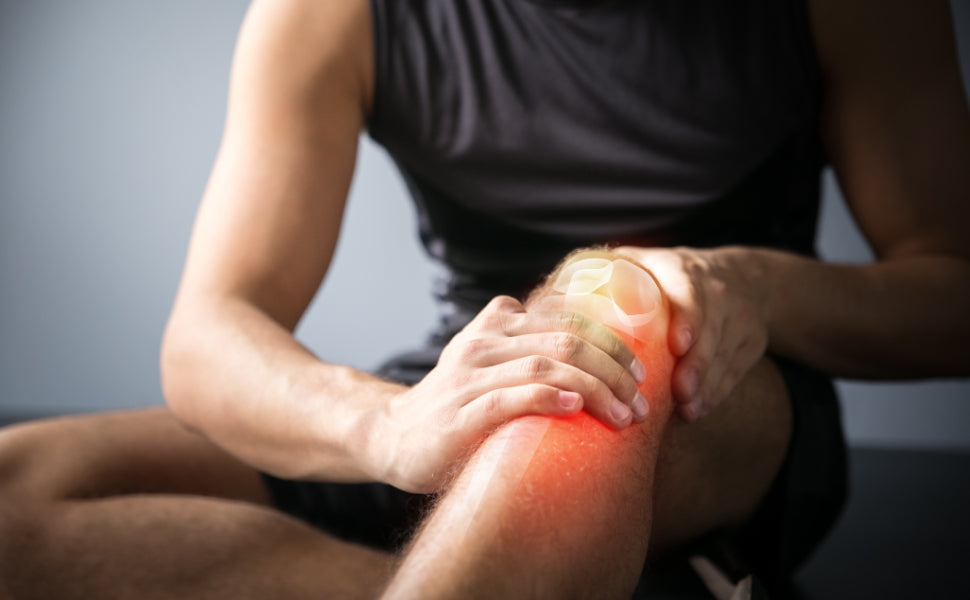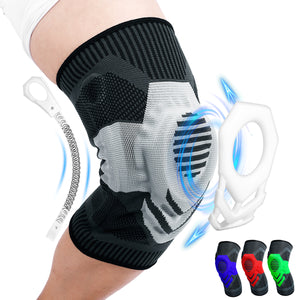What Can Be Done for Knee Arthritis?

One common condition that can cause pain, stiffness, and swelling in the knee joint is arthritis. It happens as a result of the gradual deterioration of the cushioning cartilage between the ends of the bones in the knee joint. The different options for treating osteoarthritis in the knee are examined in this blog post by fivalifitness. Both surgical and non-surgical treatment options are covered. It also discusses complementary and alternative medical practices.
fivalifitness.com
Non-Surgical Treatment Options
The following are non-surgical options for treating osteoarthritis in the knee:
- Modifications to lifestyle: Maintaining a healthy weight can ease knee joint stress and increase range of motion. Walking, swimming, and biking are examples of low-intensity exercises that can help strengthen the muscles surrounding the knee joint.
- Medication: Non-steroidal anti-inflammatory drugs (NSAIDs) like ibuprofen or naproxen, as well as over-the-counter pain relievers like acetaminophen, can help reduce pain and inflammation. Capsaicin or menthol-containing external creams or ointments may also be helpful. It might also be advised to administer injections of hyaluronic acid or corticosteroids.
- Physical Therapy: Exercises to increase knee strength, flexibility, and range of motion can be given by physical therapists. Exercises for balance, strength, and stretching may be part of this.
- Assistive devices: Shoe inserts or a knee brace can support the knee and lessen discomfort when moving. The knee joint can also be less stressed by using a walker or crutches.
- Heat and cold therapy: The afflicted area can be made less painful and inflammatory by applying hot or cold compresses. While cold therapy can be used to reduce swelling after activity, hot therapy is helpful for warming up the joint before activity.
It's critical to discuss these treatment choices with your physician in order to decide how best to manage osteoarthritis in the knee. To effectively manage symptoms, a combination of non-surgical and surgical treatments may be required in some cases.
Surgical Treatment Options
When non-surgical treatment is insufficient to relieve knee osteoarthritis, surgery may be suggested as a treatment option. Among the surgical alternatives are:
- Arthroscopic surgery: This is a minimally invasive surgical procedure that involves inserting a small camera into the knee joint to remove damaged tissue or bone fragments. Patients with mild to moderate arthritis may benefit from this.
- Knee osteotomy: To transfer weight away from the injured area, the surgeon makes cuts and reshapes the bone surrounding the knee joint. For younger patients with early-stage arthritis who are not yet candidates for knee replacement surgery, this may be advised.
- Partial knee replacement: In this procedure, an artificial component is used to replace only the damaged portion of the knee joint. Patients whose arthritis is limited to a single knee compartment may benefit from this.
- Total knee replacement: This procedure entails substituting an artificial component for the entire knee joint. Patients with severe arthritis affecting the entire knee may benefit from this.
fivalifitness.com
Coping Strategies for Managing Knee Arthritis
The following are coping mechanisms for knee osteoarthritis:
- Heat and cold therapy: Applying hot or cold compresses to the affected area can help reduce pain and inflammation. Before engaging in any activity, heat can be applied to the joint to warm it up; afterward, cold therapy can be used to reduce swelling.
- Exercise: Walking, swimming, or cycling are examples of low-intensity exercises that can help strengthen the knee muscles and increase the range of motion.
- Weight control: Retaining a healthy weight enhances mobility and lessens strain on the knee joint.
- Proper Posture and Body Mechanics: Maintaining proper body mechanics and posture can help reduce the amount of stress that routine activities place on the knee joint.
- Stress management: Using methods to manage stress, like yoga, meditation, or deep breathing, can ease pain and tension.
- Join a group for support: Participating in a support group of individuals dealing with comparable conditions can offer a feeling of camaraderie and aid in managing the psychological effects of the illness.
It is critical to discuss these coping strategies with a healthcare provider to determine the best way to manage knee osteoarthritis. Creating a customized exercise and rehabilitation program in conjunction with an occupational therapist or physical therapist may also be beneficial in addition to these tactics.
Reference
How to Relieve Knee Arthritis Pain in 30 SECONDS - YouTube
Non-Surgical Knee Pain Treatment - Penn Medicine
I Have Arthritis of the Knees: What Should I Do? - JAMA Network
*Disclaimer
The information provided in articles written by Fivali is intended for educational and reference purposes only. The content on this website (www.fivalifitness.com) is not intended to diagnose, treat, cure, or prevent any disease. We do not recommend self-diagnosis or self-treatment based on the information provided in our articles. Always consult a qualified healthcare professional if you have any concerns about your health or well-being.
If you are experiencing any symptoms or discomfort, we strongly encourage you to seek medical attention from a qualified healthcare professional. Only a licensed healthcare practitioner can provide an accurate diagnosis and appropriate treatment plan tailored to your individual needs.
-
Posted in
Healthy Lifestyle, Joint, Recovery













